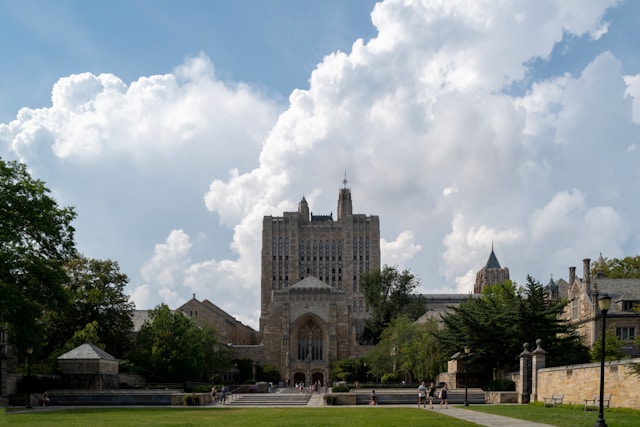# Connecticut’s 2025 Legislative Session: Balancing Fiscal Restraint with New Initiatives
The 2025 Connecticut General Assembly session wrapped up with a mix of big wins and heated arguments. Lawmakers approved a hefty $55.8 billion biennial budget, all while trying to stick to fiscal guardrails and weighing housing, labor, and environmental proposals.
Explore top-rated stays with no booking fees and instant confirmation. Your dream trip starts here!
Start Exploring Now
This session really showed the tug-of-war between keeping the state’s finances in check and expanding government programs. Governor Lamont found himself in the spotlight, pushing to keep certain fiscal limits despite plenty of pressure from all sides.
Budget Highlights and Fiscal Guardrails
Connecticut’s legislature gave the green light to a $55.8 billion biennial budget. Governor Ned Lamont called it balanced and sensible.
The budget brings major investments in education and Medicaid, which should help folks from New Haven to Hartford and everywhere in between.
Still, fiscal watchdogs in Fairfield County and beyond raised eyebrows when Governor Lamont declared a “fiscal emergency” to go over the constitutional spending cap. It’s the first time in nearly twenty years that’s happened.
Modifications to Fiscal Safeguards
The budget plan also softened the volatility cap—one of Connecticut’s main fiscal safety nets designed to rein in spending during revenue booms. Special interest groups pushed hard to get rid of these safeguards entirely, but lawmakers managed to keep most of the framework intact.
Financial experts in Stamford warn that if these guardrails keep getting chipped away, Connecticut’s financial stability could be at risk. It took years to rebuild, after all.
Labor Legislation and Business Impact
Labor laws took center stage this session, with several bills set to impact businesses and workers across Connecticut. Governor Lamont looks likely to veto a hotly debated bill that would let striking workers collect unemployment benefits—a move business groups from Waterbury to the shoreline aren’t thrilled about.
Defeated Labor Proposals
Some union-backed regulations didn’t make the cut, including:
Business leaders in Danbury and Bridgeport breathed a sigh of relief when these proposals failed. They argued the extra costs would have been tough to handle right now.
Environmental and Tax Initiatives
Environmental advocates from Greenwich and other towns felt let down after the “Green Amendment”—which would’ve guaranteed a constitutional right to a safe climate—didn’t pass. A proposed 1.75% capital gains surcharge on high-income earners also stalled out.
Modified Environmental Legislation
Lawmakers trimmed down the ambitious “Green Monster” environmental package before passing it. The final version lessened the economic hit for businesses and residents.
Environmental advocates in New London had mixed feelings. Some progress, sure, but the final bill felt a bit watered down.
Housing and Local Control
One of the session’s biggest moves was approving a major housing bill that shifts a lot of zoning power to Hartford. That’s a big change from the local control towns like Norwalk have always had over zoning decisions.
The new law aims to tackle Connecticut’s housing affordability crisis. Still, folks worry about losing their say in how their communities develop.
Looking Ahead
Connecticut heads out of the 2025 legislative session with a handful of issues still stirring up debate. The costs tied to illegal immigration keep popping up in policy talks.
Lawmakers pushed to expand tax credit scholarships for low-income students. That idea picked up some steam, but it’s still hanging in limbo.
Financial analysts around the state keep saying fiscal discipline matters. With the national economy feeling shaky, Connecticut needs to stay careful if it wants to keep its footing.
Here is the source article for this story: What Happened in the 2025 Legislative Session
Find available hotels and vacation homes instantly. No fees, best rates guaranteed!
Check Availability Now








